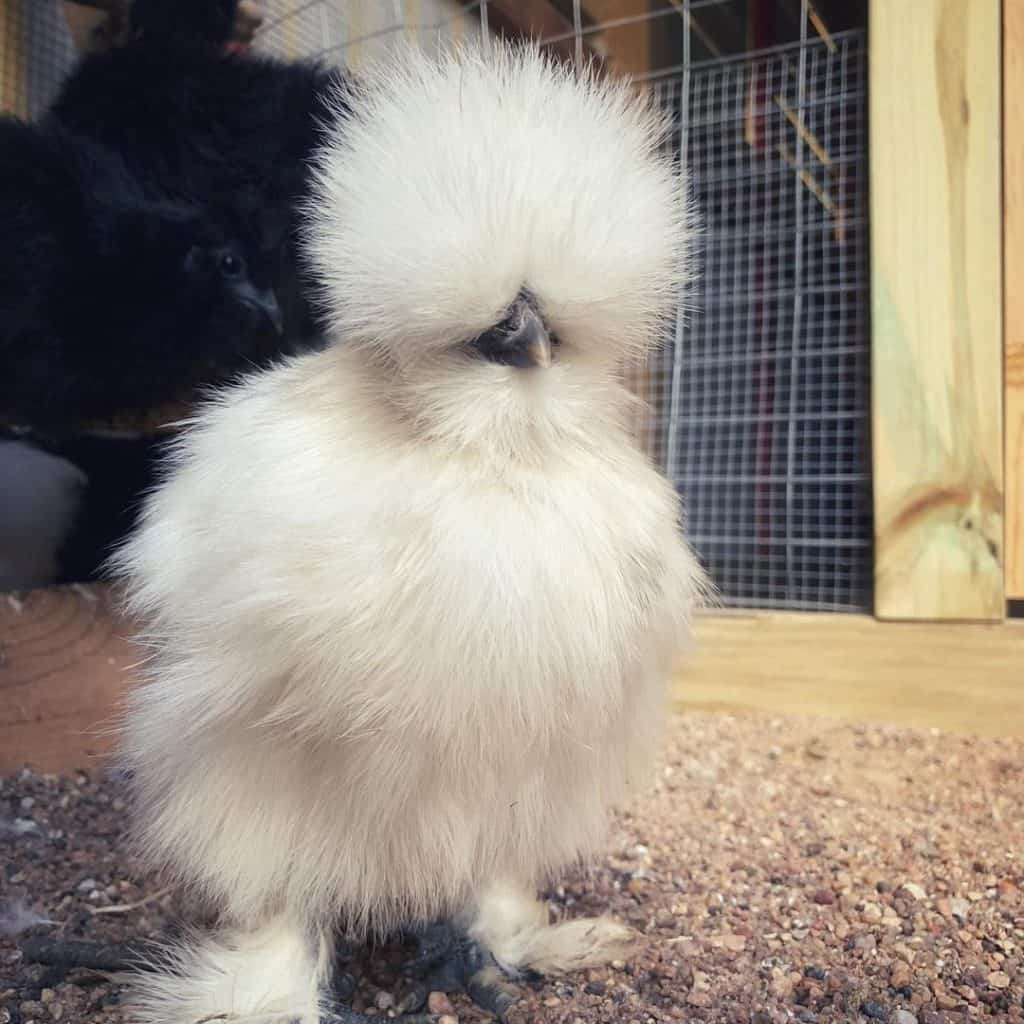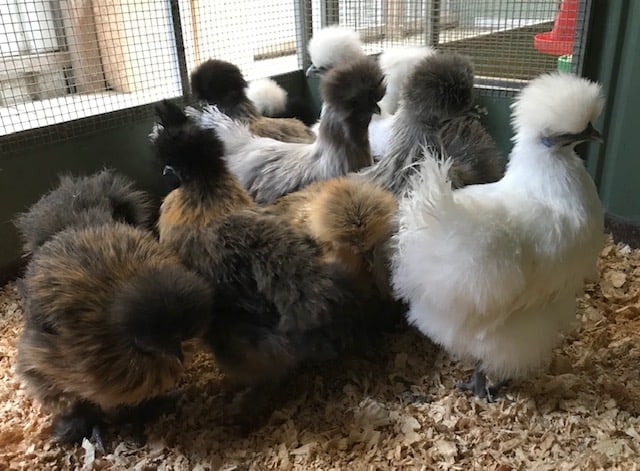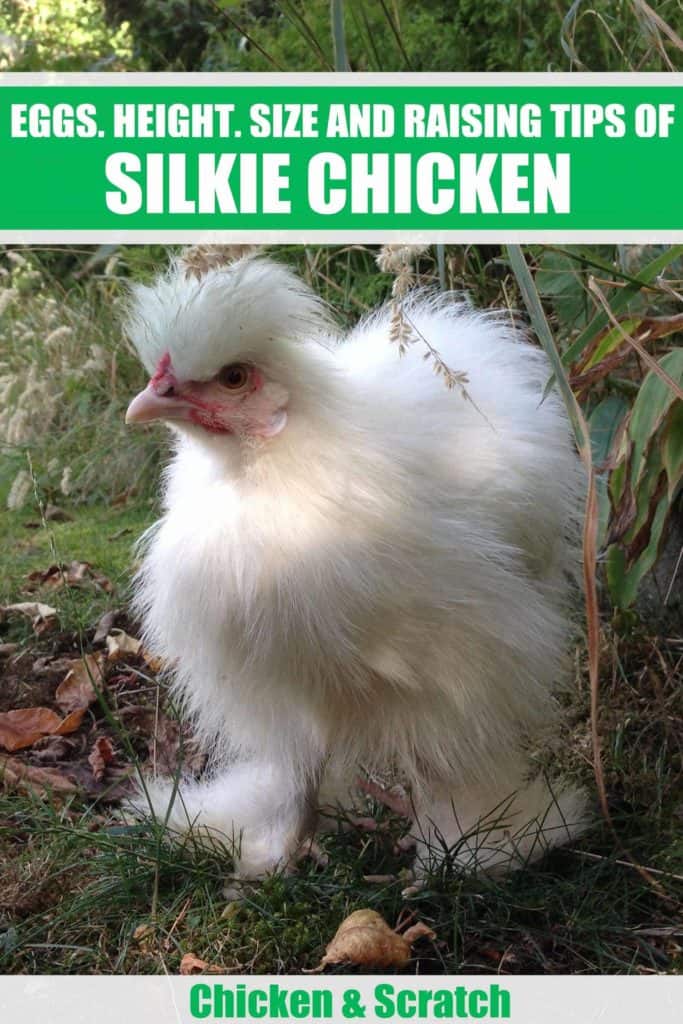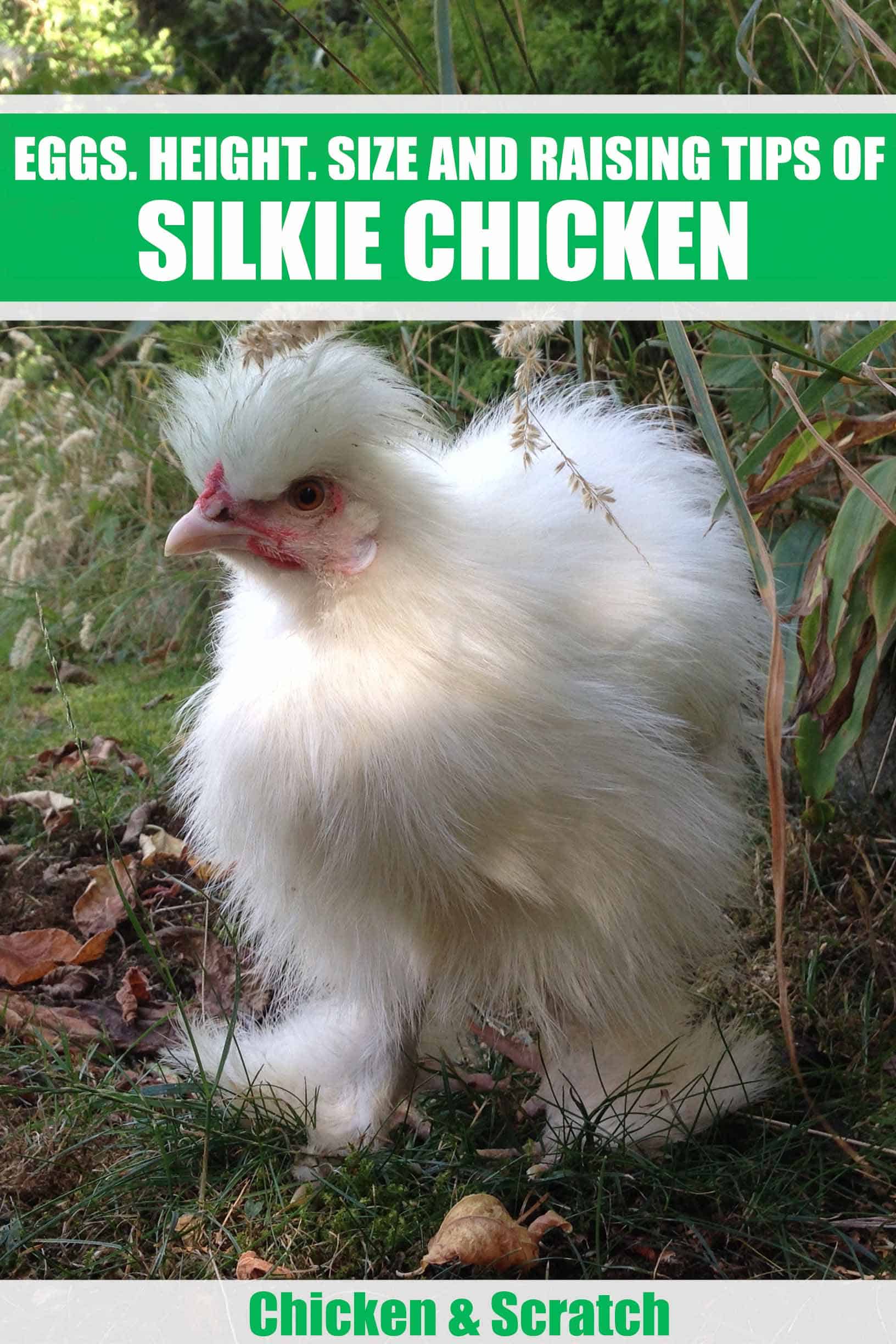Anyone seeking a quiet breed of ornamental chicken that will not annoy the neighbors and is full of friendly personality will benefit from a look at the Silkie chicken. Silkies have extremely distinctive appearances. Their lovely plumage is said to be as soft and pleasing to the touch as is satin or silk.
History of Silkie Chicken
While the exact origin of this breed’s unique combination of attributes is unknown, the point of origin is best documented in ancient China. Time-wise, this beginning took place before the 1200s. In fact, another name for the Silkie is the Chinese silkie chicken.
Other possibilities include locations in southeast Asia such as Java and India. Ancient Chinese writings hold a great amount of information about the Silkies. Eastern cultures have long held that the Silkie possesses medicinal powers that are greater than those of any other breed of chicken.
Science bears out this belief with the discovery that Silkies produce more of the anti-oxidant carnosine than do other poultry. The Silkie chicken has been highly prized in China for centuries.
Less scientifically sound beliefs included giving Silkies to women as restoratives immediately following childbirth. Recipes abound for this breed of chicken, and it is considered a delicacy in some parts of Asia.

As far as written accounts of Silkies go, the earliest surviving record is Marco Polo’s mention of furry chickens while traveling in Asia during the 13th century. Another famous mention is in a treatise on chickens written in 1598 that is still read in the present day.
In it, Ulisse Aldorvandi at Italy’s University of Bologna described chickens that were wool-bearing or were clothed with hair similar to a black cat’s. The West most likely received the first specimens of the Silkie chicken by way of maritime trade and the Silk Route.
In 1874, acceptance into North America’s Standard of Perfection marked the breed’s official recognition. As Silkies grew more common, myths about them abounded.
Sideshows displayed them with boasts of chickens that bore mammalian fur. Early Dutch breeders even told buyers that Silkies were the product of a crossbreeding between chickens and rabbits.
What Does a Silkie Chicken Look Like

The breed standard of perfection for Silkie chickens has the weight of the cock at 36 oz. and the hen at 32 oz. The combs are walnut in type. Other breed standard characteristics of the Silkie are:
- A beak that is stout and short, bearing a curve to its point
- A face with a smooth surface, fine skin, and soft texture
- Eyes that are round, large, and prominent
- Wattles that are medium-sized in non-bearded Silkies and concealed by the beard or simply non-existent in bearded Silkies
- A crest that is soft and full, of medium size, as fully upright as the comb permits in males, with silky feathers that stream back gracefully
- A short neck that arches gracefully with full hackles flowing over the shoulders
- Ahead of moderately small size, short, and carried such that a line drawn in a parallel with the tail’s tip bisects the comb
- A short tail that is quite shredded at its ends and well spread at its base, filled beneath with abundant soft feathers
- Wings that are medium in size and fold closely, carried nearly horizontal and well back
Personality and Temperament of Silkie Chickens
Silkies are highly popular options among backyard chicken keepers and families who want their children to get into the hobby of raising poultry. They are known for their calm attitude, friendliness, and docility.
Even the males are good-natured. They are sweet and charming, fond of interactions with humans. Children even find them easy to handle and hug. Their docility can lead to flock problems when there are breeds of chicken with more dominating personalities alongside the Silkies.
For this reason, other docile breeds make the best companion breeds for the Silkie. The Polish hen is a fine example. Silkies are renowned as pets, brooders, and birds kept for ornamental purposes. The hens are wonderful mothers that will happily sit atop a clutch of eggs until hatching time arrives.
Many people will give the eggs of fewer maternal chickens to Silkies for this purpose. Chickens may not be the first consideration when it comes to pets, but Silkies bridge the gap between farmyard denizen and family friends.
They do well in captivity and when permitted to free-range. They are not skilled at flying and are not skittish. For small areas, families, and farms that need broody hens, the Silkie has a perfect temperament.
Egg Laying

Silkies are among the best chickens for sitting on eggs. However, they are not the best at laying eggs themselves. Silkies only lay roughly 100 to 120 eggs on a yearly basis and have been known to stop their egg-laying altogether in the heat of the summer months.
Their eggs, while small, are still just as packed with nutrients and delicious taste as those of larger breeds of chicken. Rumors have held that the eggs of the Silkie are blue, but this is untrue. The small eggs are a standard shade of creamy brown in color.
While not record setters for egg-laying, Silkies are generally consistent through most of the year. They tend to each lay about 3 eggs per week. They are more likely than other chickens to lay eggs through cold winters because of their fluffy feathers keeping them warm and content.
Silkies are truly best matched with more prolific egg layers if hatching eggs is the desired goal. Their very tendency to go broody interrupts their egg-laying, so that characteristic that makes Silkies good foster mothers makes them less likely to thrive as actual mothers themselves.
Health Issues and Care

In general, Silkies do not have a reputation for developing any more health conditions than would other breeds of chicken. They do, however, suffer a greater susceptibility to infestation by mites and lice because of their fluffy plumage. It is, therefore, necessary to regularly check Silkies over for these parasites.
When parasites are found, the Silkie should receive appropriate treatment. This can come from the owner and handler or a veterinarian. Treatment should be prompt because of the risk of infestations spreading amongst the flock. Serious health issues can arise among the chickens when parasites are left unchecked.
Dust bathing is a particularly important activity for Silkies to prevent fleas, mites, and lice from settling in. Flocks should be provided with ample amenities for dust bathing. And, as with all chickens, Silkies need to be routinely wormed. Internal pests can also cause disaster among a flock when unnoticed and untreated.
One health condition that can impact Silkies is Marek’s disease. This viral disease is caused by a mutation of a herpes virus. Depending on the strain involved, the virus can be non-pathogenic to highly pathogenic. While many breeders have bred for natural immunity, vaccination is also possible to ensure the health of the Silkie.
Seven Tips for Silkie Raising

- Forego an artificial incubator when hatching Silkies. These excellent mothers happily sit on their clutches of eggs until they hatch. After hatching, they show excellent maternal instinct skills.
- Watch the young. Because Silkies have such dense fluff on their underbodies, young chicks can find themselves entangled within these feathers. This can result in tragic ends.
- When using an incubator, go with quality. Silkie eggs can be impacted by poorly controlled humidity. Accurate humidity control is, therefore, a must in incubator selection.
- Keep an eye on the eggs when hatching time rolls around. Silkies can require a bit of extra effort and attention when it comes time to hatch. Because of a thickened membrane that is part of the shell, the hatchling Silkie’s larger feet and head can have difficulties in the process.
- Groom gently. While silkies dust bathes themselves and preens to keep up their sharp appearances, a little extra grooming is sometimes called for. A quick rinse, followed by patting dry, usually suffices. Regular checks for parasites are also a necessary grooming element.
- Feed Silkies a balanced diet. While they have no special dietary requirements, a diet that is rich in protein along with a healthy mixture of grains, seeds, and vegetation will keep them fit. When nearing the point of lay, a specialized layer feed will ensure hens receive plenty of nutrients to produce their eggs.
- House securely. Silkies need a chicken coop of good quality to keep them protected from predators and the elements. A galvanized wire mesh and sturdy timber coop with sturdy locks will do wonders if it has adequate nesting boxes.
Summary
Silkies are excellent starter chickens, chickens for small properties, or pets for those wanting a fluffy, friendly, and unusual companion. They are sweet and social, delighting in human contact and causing no chaos in the yard or coop. This little chicken with a big history and distinct appearance is highly unique among chicken breeds.


Joseph Hudson has been raising chickens for over 15 years. In 2018, he completed the Agriculture & Natural Resources program at Mt. San Antonio College. He currently raises over 1400 chickens on his 7.5-hectare farm. He keeps sharing his experience on raising healthy and happy chickens on Chicken Scratch The Foundry.









Would you please tell me how much for a dozen Silkie eggs?
Thanks,
Hui